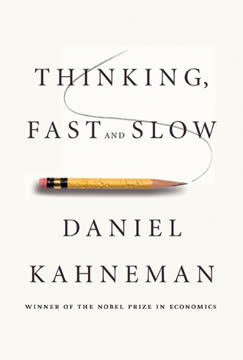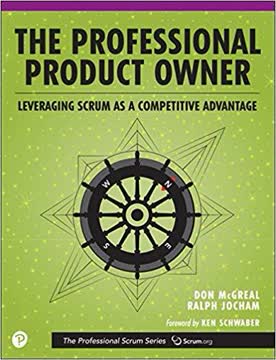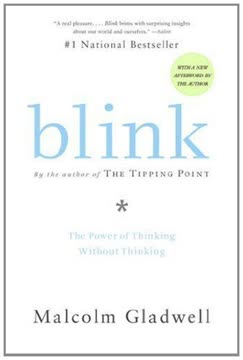Key Takeaways
1. Lean thinking is about creating more value with less waste
"Lean must include all of these: They can't work without each other. We need to utilize all of the goals, methods, techniques, and foundation elements in combination."
Value creation is paramount. Lean thinking focuses on maximizing value for the customer while minimizing waste in all processes. This requires a holistic approach that combines various tools and techniques:
- Identifying and eliminating the seven wastes: overproduction, waiting, transportation, overprocessing, inventory, motion, and defects
- Implementing pull systems to align production with customer demand
- Standardizing work to ensure consistency and efficiency
- Continuous improvement (kaizen) to constantly refine processes
The goal is not just to reduce costs, but to enhance overall value creation. This means improving quality, reducing lead times, and increasing flexibility to better serve customer needs.
2. Purpose, process, and people are the core pillars of lean transformation
"Purpose always has these two aspects: what you need to do better to satisfy your customers, and what you need to do better to survive and prosper as an organization."
Alignment is crucial. Successful lean transformation requires a clear understanding of organizational purpose, well-designed processes, and engaged people:
- Purpose: Define what value means for your customers and organization
- Process: Design and optimize value streams to deliver that value efficiently
- People: Engage and empower employees to continuously improve processes
Organizations must start by clarifying their purpose - both in terms of customer satisfaction and organizational success. This provides direction for process improvements and motivates people to contribute their ideas and efforts. Without this alignment, lean initiatives may fail to deliver sustainable results.
3. Value streams and flow are essential for optimizing processes
"Value in any activity—goods, services, or some combination—is always the end result of a process (design, manufacture, and service for external customers, and business processes for internal customers)."
Visualize the entire process. Value stream mapping is a powerful tool for understanding and improving the flow of materials and information:
- Identify all steps in the process from start to finish
- Distinguish value-adding from non-value-adding activities
- Eliminate waste and streamline the flow of work
By mapping the current state, organizations can identify bottlenecks, redundancies, and opportunities for improvement. The goal is to create a future state map that shows a more efficient, streamlined process with minimal waste and maximum value creation.
4. Lean management requires a shift from vertical to horizontal thinking
"Lean managers focus horizontally on the flow of value across the organization, from the initial concept for the product and the raw materials to the customer."
Break down silos. Traditional management structures often focus on vertical hierarchies and functional departments. Lean management requires a fundamental shift to horizontal, value-stream-based thinking:
- Appoint value stream managers responsible for entire processes
- Encourage cross-functional collaboration and problem-solving
- Align metrics and incentives with overall value creation, not departmental goals
This shift can be challenging, as it often requires changes to deeply ingrained organizational structures and mindsets. However, it is essential for truly optimizing end-to-end processes and delivering maximum value to customers.
5. Continuous improvement and respect for people drive lean culture
"Engaging in this problem-solving process is actually the highest form of respect."
Empower employees. A lean culture is built on two fundamental principles:
- Continuous improvement (kaizen): Always seeking ways to enhance processes
- Respect for people: Valuing and developing employees at all levels
These principles are interconnected. By respecting people and their ideas, organizations tap into a wealth of knowledge and creativity for improvement. This involves:
- Training employees in problem-solving methods
- Encouraging experimentation and learning from failures
- Recognizing and rewarding improvement efforts
- Creating a safe environment for sharing ideas and concerns
Leaders must model these behaviors and create systems that support ongoing learning and improvement throughout the organization.
6. Lean principles apply beyond manufacturing to all industries
"We are moving from process kaizen to flow kaizen, which is a job for line managers rather than lean experts operating in consultant mode or located in a lean promotion office."
Expand your perspective. While lean thinking originated in manufacturing, its principles are applicable to any process-oriented work:
- Healthcare: Improving patient flow and reducing medical errors
- Services: Streamlining customer experiences and reducing wait times
- Office work: Optimizing information flow and decision-making processes
- Government: Enhancing public services and reducing bureaucracy
The key is to focus on understanding and improving the flow of value, regardless of the specific industry or context. This often requires adapting lean tools and concepts to fit the unique challenges of each sector.
7. Lean transformation is a journey, not a destination
"Constancy of purpose for continual improvement of products and service to society."
Embrace ongoing evolution. Lean transformation is not a one-time project or program, but a continuous journey of learning and improvement:
- Set clear, interim objectives to build momentum
- Celebrate successes while always seeking the next level of performance
- Develop lean thinking capabilities throughout the organization
- Adapt to changing customer needs and market conditions
Organizations must resist the temptation to declare victory after initial improvements. The pursuit of perfection is never-ending, and there are always opportunities to further enhance value creation and eliminate waste.
8. Lean thinking has evolved through historical experiments and innovations
"Ford's team achieved consistently interchangeable parts (for the first time in volume production), single-piece flow in fabrication by locating many technologies in process sequence, standardized work and precisely repeatable cycle times, a primitive pull system for parts supply, and a remarkably horizontal, value-stream focus for the entire production process that minimized total lead time."
Learn from history. The development of lean thinking has been a centuries-long process of experimentation and innovation:
- Venetian Arsenal (1104): Standardized design and flow production
- Ford's Highland Park plant (1914): Moving assembly line and interchangeable parts
- Toyota Production System (1950s): Just-in-time, jidoka, and continuous improvement
Understanding this history provides valuable context and inspiration for modern lean practitioners. It demonstrates that many core lean concepts have deep roots and have been refined through countless experiments and adaptations.
9. Crisis can be a catalyst for lean transformation
"Fortunately, the recessions that follow bubbles can be great spurs to lean transformations, the necessities that birth innovations."
Turn challenges into opportunities. Economic crises and business challenges can create the urgency and openness to change necessary for lean transformation:
- Toyota's lean journey began during a financial crisis in 1950
- Many companies embrace lean thinking during recessions to reduce costs and improve efficiency
- Crises expose weaknesses in existing processes, creating motivation for improvement
While not desirable, crises can provide a powerful impetus for organizations to question long-held assumptions and embrace new ways of thinking. Leaders should be prepared to seize these moments as opportunities for transformative change.
10. Sustainability of lean improvements requires systemic change
"The problem of regression in most organizations today is confusion about priorities at different levels of the organization, compounded by the failure to make anyone responsible for the continuing performance of important value streams as they flow horizontally across the enterprise."
Address root causes. To sustain lean improvements over time, organizations must make fundamental changes to their management systems and culture:
- Align metrics and incentives with lean principles
- Develop lean leadership capabilities at all levels
- Create structures for ongoing problem-solving and improvement
- Integrate lean thinking into strategic planning and decision-making processes
Many organizations struggle with sustainability because they focus solely on implementing lean tools without addressing the underlying management practices and organizational structures. True lean transformation requires a holistic approach that creates an environment where continuous improvement can thrive.
Last updated:
FAQ
What's Gemba Walks about?
- Lean Principles Focus: Gemba Walks by James P. Womack emphasizes understanding the "gemba," the actual place where value is created, to drive improvement.
- Observation and Learning: The book highlights learning through real-time observation of processes, which can lead to significant insights in lean management.
- Broad Application: Womack extends lean thinking beyond manufacturing to sectors like healthcare and services, showcasing its universal applicability.
Why should I read Gemba Walks?
- Practical Insights: The book offers actionable insights and real-world examples applicable across various industries, enhancing organizational efficiency.
- Expert Guidance: As a leading figure in the lean movement, Womack provides valuable lessons for both new and seasoned practitioners.
- Cultural Shift: It encourages a shift from top-down management to one that values employee engagement and continuous improvement.
What are the key takeaways of Gemba Walks?
- Gemba Importance: Understanding the gemba is crucial for effective management, as it is where work and leadership insights are gained.
- Employee Engagement: Lean management involves engaging with employees and respecting their insights, fostering a culture of collaboration.
- Continuous Improvement: The book advocates for a culture of continuous improvement, regularly assessing and refining processes to enhance value creation.
What is the concept of "gemba" in Gemba Walks?
- Definition of Gemba: "Gemba" means "actual place" in Japanese, referring to where value is created and processes should be observed directly.
- Empirical Learning: Womack argues that true understanding comes from being present at the gemba, allowing leaders to see problems firsthand.
- Value Creation Focus: Observing the gemba helps identify waste and inefficiencies, leading to improved processes and enhanced customer value.
How does James P. Womack suggest implementing lean management?
- Value-Stream Mapping: Womack encourages using value-stream mapping to visualize processes and identify areas for improvement.
- Employee Engagement: Involving employees in the improvement process is crucial, as they provide valuable insights and are closest to the work.
- Continuous Learning: A culture of learning and experimentation is essential, with regular assessments and adaptations based on gemba walks.
What are some common misconceptions about lean management discussed in Gemba Walks?
- Beyond Tools: Lean management is not just about tools; it's a mindset and culture focused on continuous improvement.
- No One-Size-Fits-All: Each organization must adapt lean principles to fit its unique context and challenges.
- Not a Quick Fix: Lean transformation requires sustained effort and commitment, not just a quick solution to operational issues.
How does Gemba Walks address lean in non-manufacturing sectors?
- Broad Application: Womack discusses applying lean principles in sectors like healthcare and services, demonstrating its versatility.
- Case Studies: The book includes examples from various industries, illustrating successful lean implementations outside manufacturing.
- Value Streams Focus: Understanding and mapping value streams is crucial in all contexts to identify waste and improve processes.
What role do "value-stream managers" play in lean organizations according to Gemba Walks?
- Overseeing Value Streams: They are responsible for the entire flow of value for specific product families, aligning processes with customer needs.
- Facilitating Collaboration: Value-stream managers act as liaisons between departments, fostering collaboration to optimize the value stream.
- Continuous Improvement: They identify areas for improvement and lead initiatives to enhance efficiency and effectiveness within their value streams.
What are the best quotes from Gemba Walks and what do they mean?
- "Go see, ask why, show respect.": This quote encapsulates lean management, urging leaders to engage directly with processes and employees.
- "The gemba is where you go to understand work and to lead.": Highlights the importance of being present at the work site for effective leadership.
- "In the absence of value, everything is muda.": Emphasizes focusing on customer value to avoid wasteful activities.
How does Gemba Walks suggest measuring success in lean initiatives?
- Performance Metrics: Establish clear metrics aligned with customer value and organizational goals to evaluate lean initiatives.
- Continuous Improvement: Success involves fostering a culture of continuous improvement, regularly reviewing and adjusting processes.
- Employee Feedback: Gathering insights from employees involved in processes is vital for measuring success and identifying further improvements.
What challenges do organizations face when adopting lean principles as discussed in Gemba Walks?
- Cultural Resistance: Resistance to change from traditional management practices is common, requiring a culture of openness and engagement.
- Misalignment of Metrics: Conflicts between departmental metrics and organizational goals can lead to suboptimal performance.
- Lack of Understanding: Many struggle with understanding lean principles and their application, necessitating ongoing education and training.
How does Gemba Walks address the issue of sustainability in lean practices?
- Continuous Improvement Focus: Sustainability comes from a commitment to continuous improvement, regularly assessing and refining processes.
- Employee Engagement: Involving all employees in the improvement process ensures investment in sustaining lean practices.
- Value-Stream Management: Appointing value-stream managers helps maintain focus on value flow and ensures sustained improvements.
Review Summary
Gemba Walks receives mixed reviews, with an overall positive reception. Readers appreciate Womack's insights into lean methodology and his self-reflective approach. The book's organization and short essays are praised for their accessibility. Critics note the repetitive nature of some content and the lack of specific guidance on conducting gemba walks. Many find value in the lean principles presented, particularly the emphasis on going to the gemba, engaging others, and focusing on value streams. Some readers struggle with Womack's narration style in the audiobook version.
Similar Books








Download PDF
Download EPUB
.epub digital book format is ideal for reading ebooks on phones, tablets, and e-readers.






